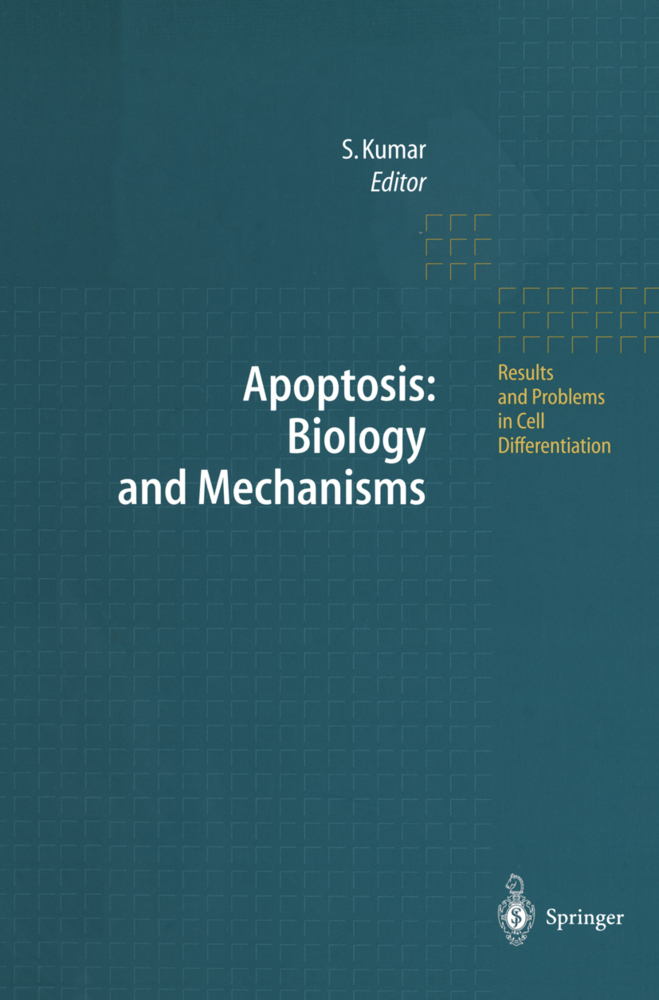The evolutionary origins of hydrogenosomes have been the subject of considerable debate. This volume closes the gap between the endosymbiotic theory for the origin of organelles and their incorporation into evolutionary theory. It reveals that identifying the genetic contribution to eukaryotes of the mitochondrial endosymbiosis, and revealing the functions of its descendent organelles, are key to understanding eukaryotic biology and evolution.
1;Preface;5 2;Foreword;6 3;Contents;9 4;List of Contributors;14 5;1 The Road to Hydrogenosomes;16 5.1;1.1 Introduction;16 5.2;1.2 The Story;17 5.3;1.3 Conclusion;24 5.4;References;25 6;2 Mitochondria: Key to Complexity;27 6.1;2.1 Introduction;27 6.2;2.2 Size;29 6.3;2.3 Compartments;30 6.4;2.4 Dynamics of Gene Gain and Gene Loss in Bacteria;31 6.5;2.5 ATP Regulation of Bacterial Replication;35 6.6;2.6 Redox Poise Across Bioenergetic Membranes;39 6.7;2.7 Allometric Scaling of Metabolic Rate and Complexity;43 6.8;2.8 Conclusions;46 6.9;References;47 7;3 Origin, Function, and Transmission of Mitochondria;53 7.1;3.1 Introduction;53 7.2;3.2 Origins of Mitochondria;54 7.3;3.3 Mitochondrial Genomes;57 7.4;3.4 The Mitochondrial Theory of Ageing;59 7.5;3.5 Why Are There Genes in Mitochondria?;61 7.6;3.6 Co-location of Gene and Gene Product Permits Redox Regulation of Gene Expression;62 7.7;3.7 Maternal Inheritance of Mitochondria;64 7.8;3.8 Conclusions;67 7.9;References;67 8;4 Mitochondria and Their Host: Morphology to Molecular Phylogeny;71 8.1;4.1 Introduction;71 8.2;4.2 Alternative Visions;71 8.3;4.3 Before the Word;73 8.4;4.4 Les Symbiotes;74 8.5;4.5 Symbionticism and the Origin of Species;76 8.6;4.6 Against the Current;77 8.7;4.7 Infective Heredity;79 8.8;4.8 The Tipping Point;81 8.9;4.9 The Birth of Bacterial Phylogenetics;83 8.10;4.10 Just-So Stories;84 8.11;4.11 Kingdom Come, Kingdom Go;85 8.12;4.12 A Chimeric Paradigm;88 8.13;4.13 Recapitulation;91 8.14;References;92 9;5 Anaerobic Mitochondria: Properties and Origins;98 9.1;Summary;98 9.2;5.1 Introduction;98 9.3;5.2 Possible Variants in Anaerobic Metabolism;99 9.4;5.3 Cytosolic Adaptations to an Anaerobic Energy Metabolism;101 9.5;5.4 Anaerobically Functioning ATP-Generating Organelles;102 9.6;5.5 Energy Metabolism in Anaerobically Functioning Mitochondria;103 9.7;5.6 Adaptations in Electron-Transport Chains in Anaerobic Mitochondria;108 9.8;5.7 Structural Aspects of Anaerobically Functioning Electron- Transport Chains;109 9.9;5.8 Evolutionary Origin of Anaerobic Mitochondria;110 9.10;5.9 Conclusion;113 9.11;References;113 10;6 Iron-Sulfur Proteins and Iron-Sulfur Cluster Assembly in Organisms with Hydrogenosomes and Mitosomes;117 10.1;6.1 Introduction;117 10.2;6.2 Mitochondrion-Related Organelles in "Amitochondriate" Eukaryotes;118 10.3;6.3 Iron-Sulfur Cluster, an Ancient Indispensable Prosthetic Group;121 10.4;6.4 Iron-Sulfur Proteins in Mitochondria and Other Cell Compartments;121 10.5;6.5 Iron-Sulfur Proteins in Organisms Harboring Hydrogenosomes and Mitosomes;122 10.6;6.6 Iron-Sulfur Cluster Assembly Machineries;128 10.7;6.7 Iron-Sulfur Cluster Biosynthesis and the Evolution of Mitochondria;135 10.8;References;139 11;7 Hydrogenosomes (and Related Organelles, Either) Are Not the Same;146 11.1;7.1 Introduction;146 11.2;7.2 Hydrogenosomes and Mitochondrial-Remnant Organelles Evolved Repeatedly: Evidence from ADP/ ATP Carriers;150 11.3;7.3 Functional Differences Between Mitochondrial and Alternative ADP/ ATP Transporters;153 11.4;7.4 Evolutionary Tinkering in the Evolution of Hydrogenosomes;155 11.5;7.5 Why an [Fe]-Only Hydrogenase?;163 11.6;7.6 Conclusions;164 11.7;References;165 12;8 The Chimaeric Origin of Mitochondria: Photosynthetic Cell Enslavement, Gene- Transfer Pressure, and Compartmentation Efficiency;171 12.1;Summary;171 12.2;8.1 Key Early Ideas;172 12.3;8.2 The Host Was a Protoeukaryote Not an Archaebacterium;176 12.4;8.3 Was the Slave Initially Photosynthetic?;178 12.5;8.4 Three Phases of;179 12.6;proteobacterial Enslavement;179 12.7;8.5 Did Syntrophy or Endosymbiosis Precede Enslavement?;183 12.8;8.6 The Chimaeric Origin of Mitochondrial Protein Import and Targeting;186 12.9;8.7 Stage 2: Recovery from Massive Organelle-Host Gene Transfer;190 12.10;8.8 Mitochondrial Diversification;195 12.11;8.9 Conceptual Aspects of Megaevolution;195 12.12;8.10 Relative Genomic Contributions of the Two Partners;198 12.13;8.11 Genic Scale, Tempo, and Timing of Mitochondrial Enslav
Martin, William F.
Müller, Miklós
| ISBN | 9783540385028 |
|---|---|
| Artikelnummer | 9783540385028 |
| Medientyp | E-Book - PDF |
| Auflage | 2. Aufl. |
| Copyrightjahr | 2007 |
| Verlag | Springer-Verlag |
| Umfang | 306 Seiten |
| Sprache | Englisch |
| Kopierschutz | Digitales Wasserzeichen |











